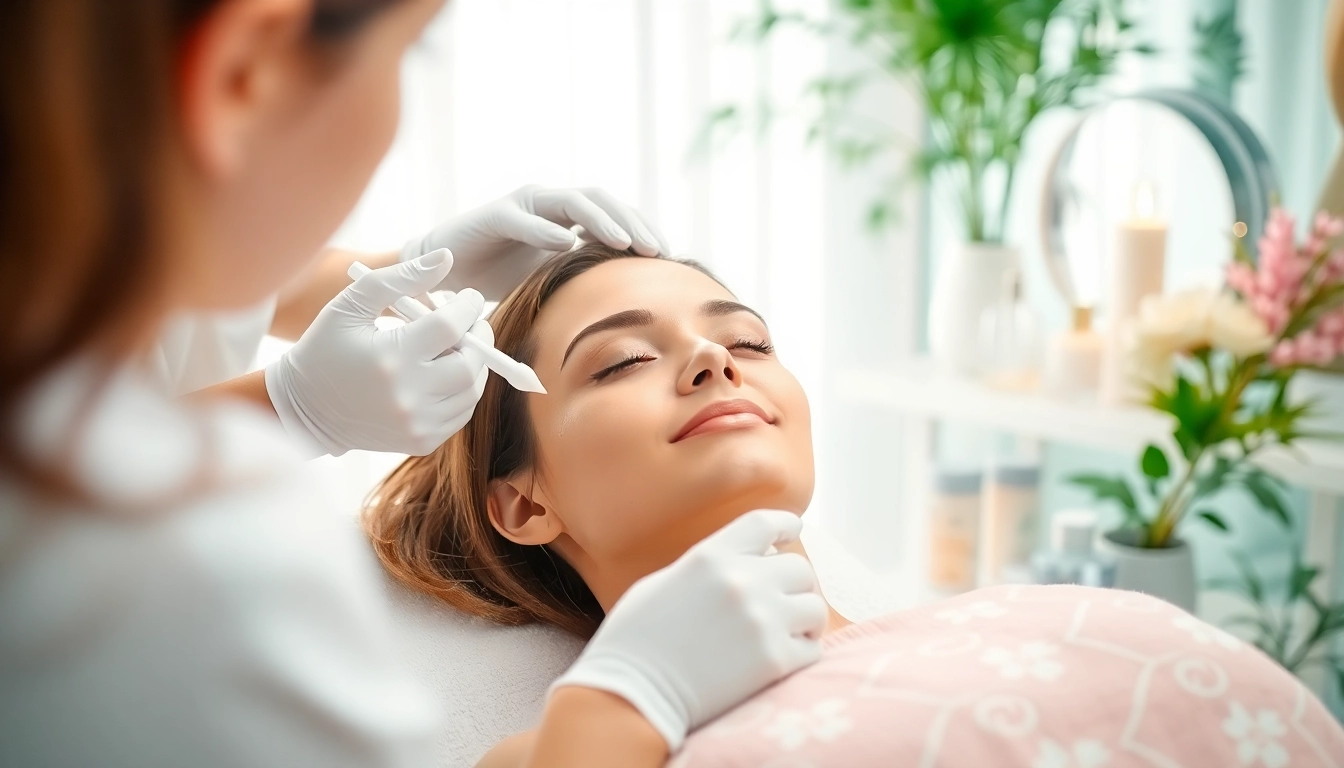Understanding Beauty: The Foundation of Skincare
Beauty is often associated with the outer appearance, but it fundamentally stems from the health of our skin. Healthy skin reflects our internal health, lifestyle choices, and overall well-being. By immersing ourselves in the science behind skincare, we uncover the essential practices that not only enhance our outer beauty but also elevate our confidence and self-esteem. To explore transformative skincare solutions, consider visiting beauty resources that provide detailed insights into this dynamic realm.
The Science Behind Healthy Skin
Our skin is the largest organ of the body, playing a pivotal role in protecting us from external elements while helping regulate temperature and hydration. The outermost layer, the stratum corneum, acts as a barrier, and the underlying layers contain various cells responsible for repair and renewal. Several factors influence skin health:
- Hydration: Dehydrated skin can lead to a myriad of issues, including flakiness and increased sensitivity.
- Sun Protection: UV exposure accelerates aging and increases the risk of skin cancer; thus, sunscreen is a must.
- Cell Turnover: As we age, the natural exfoliation process slows down, necessitating external interventions.
Understanding these processes is essential for establishing an effective skincare routine tailored to individual needs.
Common Beauty Myths Debunked
With the proliferation of information available regarding skincare, beauty myths continue to circulate. Here are some of the most common misconceptions:
- Myth 1: Oily skin doesn’t need moisturizer.
- Myth 2: Natural products are always better for the skin.
- Myth 3: You can shrink your pores.
Debunking these myths is crucial for making informed decisions about skincare products and practices. For instance, all skin types require hydration, and stripping oils from the skin can lead to increased oil production.
The Role of Diet in Beauty
Your diet plays a significant role in your skin’s health. Nutrient-dense foods can contribute to a glowing complexion, while inflammatory foods can exacerbate skin issues. Here are key nutrients for maintaining beautiful skin:
- Antioxidants: Vitamins C and E protect the skin from oxidative stress.
- Omega-3 Fatty Acids: These help maintain skin barrier function and hydration.
- Zinc: Vital for skin repair and inflammation reduction.
Incorporating a variety of fruits, vegetables, whole grains, and lean proteins into your diet can pave the way toward achieving radiant skin.
Essential Beauty Treatments for All Skin Types
There isn’t a one-size-fits-all approach when considering beauty treatments. Identifying the right treatments based on your skin type is essential for achieving desired results. Below are some of the most essential treatments, categorized by their benefits, to help anyone embark on their beauty journey.
Hydrating Facials: Benefits and Techniques
Hydrating facials are a go-to treatment for anyone experiencing dry or dull skin. These facials typically involve the application of hydrating serums, masks, and moisture-rich creams that penetrate the skin to restore moisture levels. Benefits include:
- Improved skin texture
- Enhanced radiance
- Reduction in the appearance of fine lines
Techniques may vary, but a typical hydrating facial involves cleansing, exfoliating, applying a hydrating mask, and finishing with a moisturizer suited to your skin type.
Exfoliation: Types and Best Practices
Exfoliation is a key component of any skincare routine. It helps remove dead skin cells, facilitating better absorption of products and revealing brighter skin underneath. There are two main types of exfoliants:
- Physical Exfoliation: Involves scrubs or tools that manually remove dead skin cells.
- Chemical Exfoliation: Uses acids or enzymes to dissolve dead skin cells and promote cellular turnover.
Best practices include limiting exfoliation to 1-3 times a week, depending on your skin type, to avoid irritation. Always follow exfoliation with a soothing moisturizer.
Targeting Specific Concerns: Acne, Aging, and More
Different skin types and concerns require tailored treatment approaches. For acne, treatments may include salicylic acid and benzoyl peroxide, whereas anti-aging solutions might focus on retinoids or hyaluronic acid. Each of these ingredients works to combat specific issues:
- Acne: Target excess oil production and unclog pores.
- Aging: Stimulate collagen production and improve skin elasticity.
- Hyperpigmentation: Even out skin tone with brightening agents like vitamin C and licorice extract.
Customizing your skincare regimen according to your unique concerns helps in achieving significant improvements over time.
Professional Beauty Services: What to Expect
Professional beauty services offer a plethora of treatment options tailored to various skin types and concerns. Understanding what to expect during these services can alleviate anxiety and provide clarity on their benefits.
Consultations: Preparing for Your First Visit
Prior to any treatment, a consultation is essential. This is your opportunity to discuss your skin history, concerns, and goals. Preparing for your consultation can help enhance the effectiveness of your treatment plan:
- Bring a list of products you currently use.
- Be ready to discuss lifestyle factors, like diet and stress levels.
- Expect a thorough skin analysis.
A comprehensive consultation allows the beauty professional to tailor a treatment plan suitable for your unique skin needs.
Choosing the Right Treatment for Your Needs
With an understanding of your skin condition, the next step is selecting the appropriate treatment. Factors to consider include:
- Your skin type
- Specific concerns (acne, dryness, fine lines)
- Time available for recovery and maintenance
Consulting with a qualified professional will also ensure that the treatment aligns with your goals while offering the best chances for optimal results.
Post-Treatment Care: Maximizing Results
Post-treatment care is critical for maximizing the results of any beauty treatment. Guidelines may include:
- Using recommended products to aid healing.
- Avoiding direct sun exposure, and always wearing sunscreen.
- Staying hydrated and maintaining a balanced diet.
Embracing these aftercare practices can prolong the effects of professional treatments, ensuring you achieve your desired aesthetic results.
DIY Beauty Practices: At-Home Solutions
While professional treatments can yield remarkable results, there are plenty of at-home beauty practices that can enhance your skincare routine without professional intervention. With the right knowledge and products, you can create an effective routine that promotes skin health.
Safe and Effective Home Remedies
DIY beauty practices can include simple recipes using natural ingredients found in your kitchen. Some popular home remedies consist of:
- Honey and yogurt mask: Moisturizes and soothes the skin.
- Cucumber slices: Reduce puffiness and refresh the eyes.
- Oatmeal scrub: Gently exfoliates and calms irritated skin.
While home remedies can be effective, it’s crucial to perform patch tests to prevent adverse reactions.
The Importance of Consistency in Skincare
Consistency is key in any skincare routine. Regular use of products and adherence to a regimen can significantly enhance skin health. Creating a daily schedule that includes cleansing, exfoliating, and moisturizing helps yield the best results over time. Consider keeping a journal to track your routine and note any changes in your skin’s condition.
Tools and Products for Home Use
Using the right tools can revolutionize your skincare at home. Some must-have tools include:
- Facial rollers: Help with lymphatic drainage and improve circulation.
- Derma rollers: Stimulate collagen production through micro-needling.
- Cleansing brushes: Deeply cleanse pores for clearer skin.
Combining these tools with effective products allows for a comprehensive skincare experience right in the comfort of your home.
Measuring Your Beauty Progress: Tracking Results
Documenting skincare progress can empower individuals and keep them motivated. Knowing where you started and measuring improvements and challenges can provide valuable insights that help you stay dedicated to your beauty journey.
Setting Realistic Beauty Goals
Set achievable beauty goals based on realistic expectations regarding your skin. Consider timelines and what is genuinely possible for your skin type. Goals may involve:
- Improving skin texture
- Reducing acne or blemishes
- Achieving a more radiant complexion
Aligning your goals with achievable milestones not only fosters a sense of accomplishment but also ensures you stay focused.
How to Document Changes Over Time
Effective documentation can involve various methods:
- Photos: Taking before-and-after pictures can visually illustrate progress.
- Journals: Keeping a skincare journal detailing product usage and skin reactions.
- Apps: Using skincare tracking apps to manage routines and results.
Regular documentation helps you identify what works and guides future skincare choices.
When to Seek Professional Help Again
Understanding when to return to a professional is vital for maintaining skin health. Signs that you should seek help include:
- Persistent skin issues that don’t respond to at-home treatments.
- Significant changes in skin texture or appearance.
- Concerns about conditions like hyperpigmentation or the onset of wrinkles.
Proactive engagement with skincare professionals can prevent minor issues from becoming significant problems, reinforcing the importance of ongoing care.



